Things to do in La Boca Neighborhood
La Boca is the oldest, most colorful, and most authentic neighborhood in Buenos Aires. La Boca is mostly a working-class neighborhood and it is known throughout the world as the home of Boca Juniors, one of South America’s top football clubs.
Mass settlement in La Boca began in 1840, with an influx of immigrants from Genoa, Italy. Coming from a port city, it was natural for the Genoese to settle along the Buenos Aires waterfront. The new arrivals constructed tenements made of scrap metal and painted the shacks with bright leftover paint to liven up the one-time wasteland. The Genoese proudly brought their unique identity to La Boca, and one of their old traditions was to paint the outside of their homes with the leftover paint from the shipyard – as nothing else was available or could be afforded. Here are the main attractions:
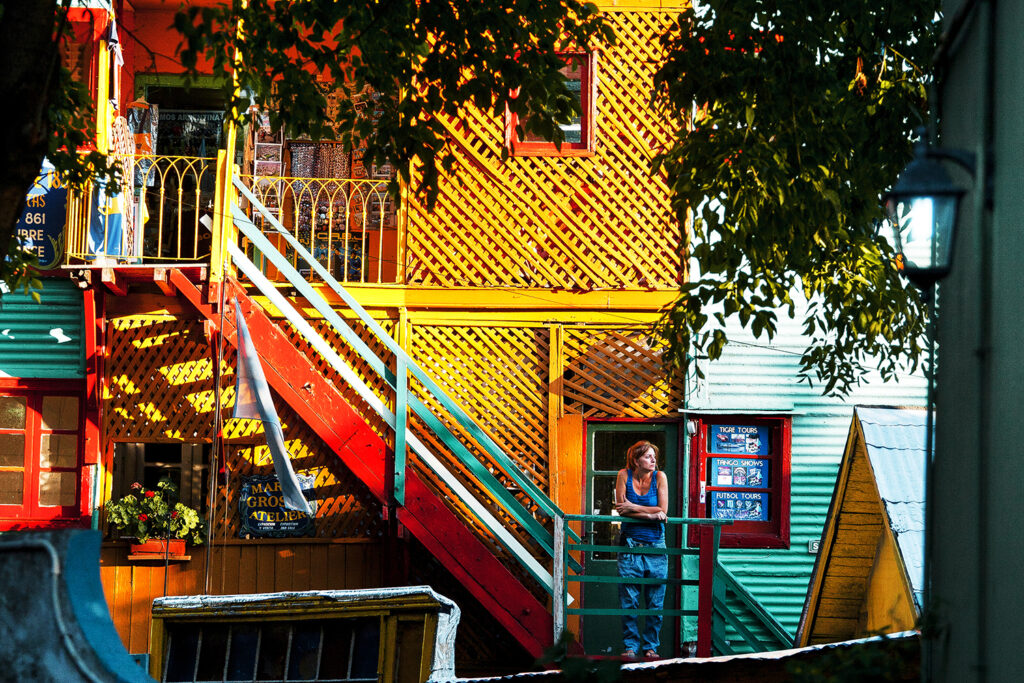
La Usina del Arte
Dubbed “the new home of culture” by Mayor Mauricio Macri’s administration, the Usina del Arte, an abandoned red brick electric factory near the Riacheulo, has been scrubbed up and turned over to the arts.
And culture fans have plenty to be excited about: boasting Buenos Aires’ first symphony concert hall, music, art, dance and theatre are just some of the plans on the agenda for the centre, which will also be home to the Buenos Aires’ Philharmonic and National Symphony Orchestras.
The complex is just between Puerto Madero and La Boca district. So it is possible that this space will work as a cultural corridor between the two and it will enhance the neighborhood.
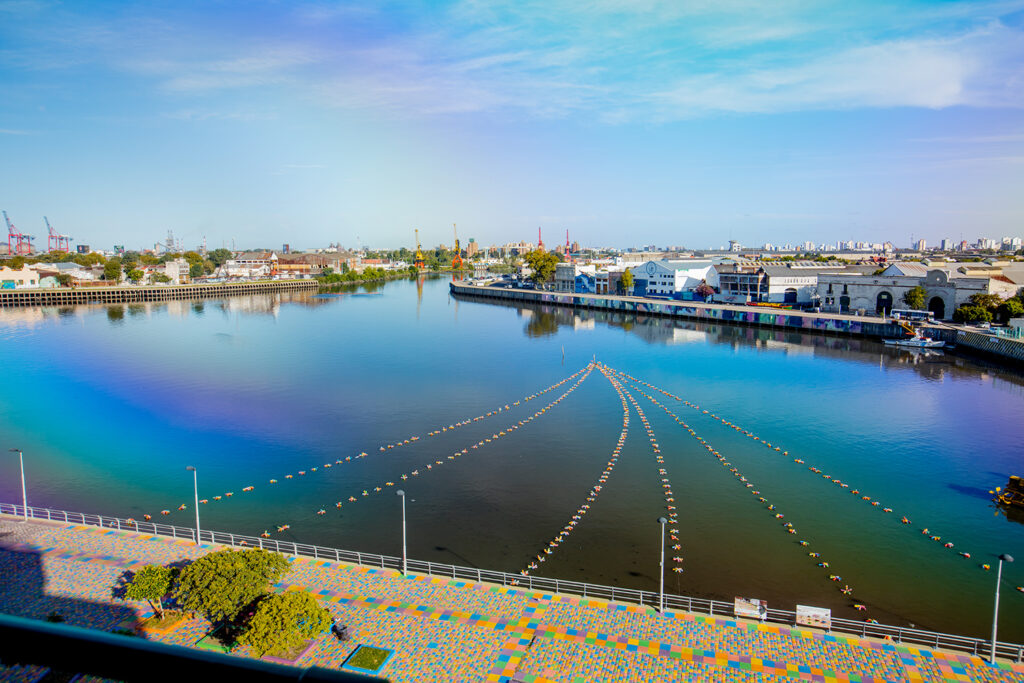
The complex, designed by Juan Chiogna, was built between 1914 and 1916 by Martignone e Hijos and continued to produce electricity until the early-1990s. This was when Carlos Menem’s administration privatised utilities, and after its doors closed, the building was abandoned. From outside, the building is quite spectacular, standing out from its run-down surroundings. From the clock tower where the bell would be rung to call electricity workers in for their shifts, to the Romeo and Juliet-like balconies where orders would be called to workers in the front courtyard, each and every historical detail has been preserved.
Inside the grand, luminous entrance hall, many original parts of the building were also restored, such as the iron-cast staircases that wrap round the side areas of the structure as well as some of the old tiled flooring on the ground floor.
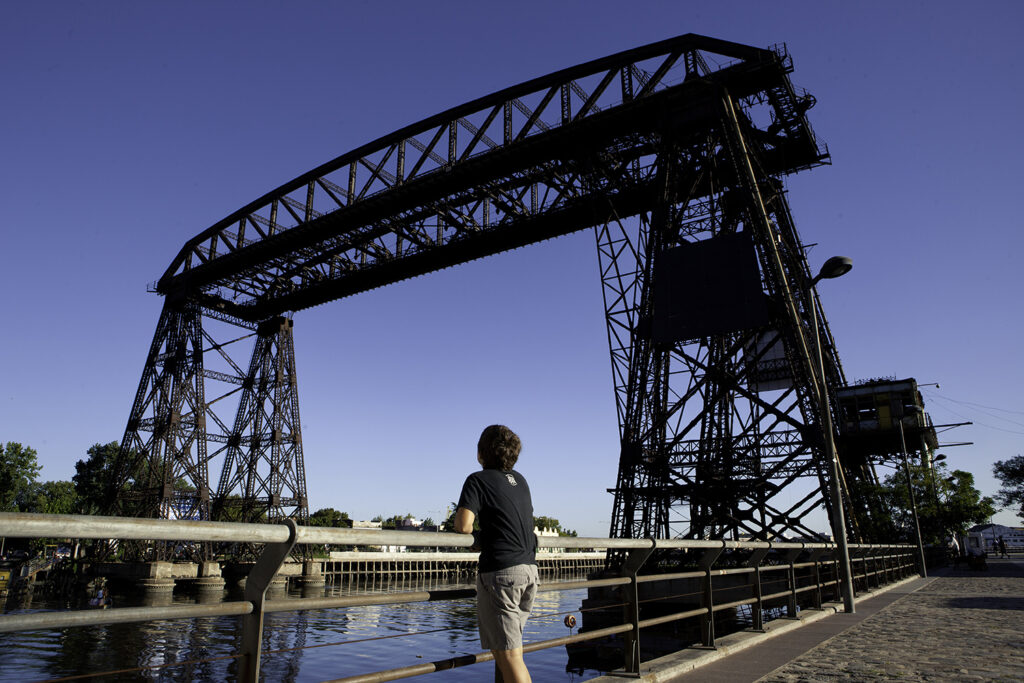
The Usina del Arte is currently not open on a daily basis to the public. However, from now until December, free guided tours are carried out on Saturday and Sunday afternoons, highly recommendable for those who have yet to visit the building. It will also be open for specific performances until the end of the year.
The Usina is open at specific times for concerts, for details check the CityGovernment’s culture website.*
The Museo del Cine, created in 1971, is now located in the building adjacent to the Usina on Caffarena 49. It is open from Monday to Friday 11am-6pm and on Saturdays, Sundays and bank holidays from 10am-7pm.

El Obrero
Just across from La Usina del Arte, there is an old traditional restaurant where you can eat like a real “porteño”. You shouldn’t look for refined or exotic dishes but for plentiful and simple dishes of the porteño cuisine. This bar opened in 1954, used to feed workers who worked at shipyards and garages near it. Visit El Obrero for an authentic and memorable lunch. It is really worth it. Address: Agustín R. Caffarena 64.
La Boca Soccer Stadium
Visit the Legendary Boca Soccer Stadium and its Museum. Boca Juniors is one of the biggest soccer teams in Argentina and happens to be one of the clubs that the soccer great Diego Maradona played for. Club Atlético Boca Juniors was founded in 1905, and has been known as the club for the working class. Their official nickname is Los Xeneizes (The Geonese after the Geonese Italians that founded the club). Their stadium, La Bombonera, is not so surprisingly located in the La Boca district. It is possible to get tickets to most games and be a part of a truly Argentine experience. Everything is intertwined and indivisible: not only is La Bombonera a part of a neighborhood which witnessed its creation but it also defines its identity. It was on this port suburb that football and Argentina were born. Settled inside the football field building, this museum (with access through a gift shop with a wide variety of blue and yellow souvenirs) opens up through a long corridor where the pictures of all premier division players who have defended the T-shirt since 1931 are on display. This is how worship of the past begins. At the end of the corridor, inside a huge football ball-shaped room, we could live the 360-degree experience of going into the football field and stepping on the lawn of La Bombonera in a unique spectacular audio-visual event.
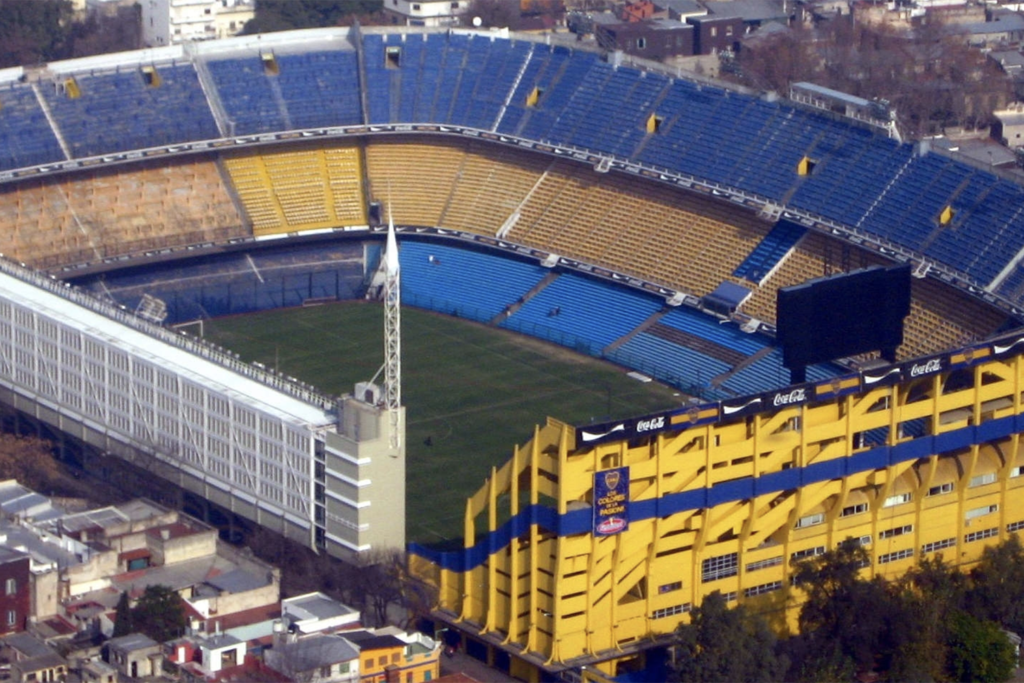
Fine Arts Museum of La Boca
Visit the Legendary Boca Soccer Stadium and its Museum.
Once a residence and studio of the artist Quinquela Martin, this museum has a collection of early 20th century Argentine artists.Benito Quinquela Martin, an abandoned orphan who was adopted by a Genoese immigrant couple in La Boca, was the man to take action. He had become the most significant painter in Argentina, with his dramatic paintings of the port of La Boca, and achieved worldwide recognition.
But as La Boca was his inspiration, and had provided him with family, friends and shelter after having been orphaned at an early age, he felt he owed the barrio something in return. Quinquela Martín is considered the port painter and one of the country’s most popular painters. His paintings show port activity, vigor and harshness of daily life in La Boca port. He had to work as a child carrying bags of coal and these experiences influenced his artistic vision obras.
The permanent exhibition consists of works of figurative Argentine artists from the late nineteenth century to today. Also includes a collection of figureheads, unique in Latin America, represented by interesting pieces from the late nineteenth century. In the room Sivori, temporary exhibitions of great masters of Argentine art, renowned contemporary artists and emerging artists perform; linking heritage with contemporary production works. The third floor is currently the House – Museum Quinquela where his great works and personal belongings are exhibited.
Their stadium, La Bombonera, is not so surprisingly located in the La Boca district. It is possible to get tickets to most games and be a part of a truly Argentine experience.
Everything is intertwined and indivisible: not only is La Bombonera a part of a neighborhood which witnessed its creation but it also defines its identity. It was on this port suburb that football and Argentina were born.
Settled inside the football field building, this museum (with access through a gift shop with a wide variety of blue and yellow souvenirs) opens up through a long corridor where the pictures of all premier division players who have defended the T-shirt since 1931 are on display. This is how worship of the past begins.
At the end of the corridor, inside a huge football ball-shaped room, we could live the 360-degree experience of going into the football field and stepping on the lawn of La Bombonera in a unique spectacular audio-visual event.
Museum of Fine Arts Quinquela:
Av. Pedro de Mendoza 1835/1843.
Tuesdays - Fridays; From: 10 am to 18 pm, and Saturdays, Sundays and holidays from 11 to 18 hs. Closed on Mondays.
Quinquela Martin, the creator of “caminito” street
In 1959, Quinquela Martin and his artist friends created the street of Caminito, as a means of recreating the way old La Boca used to look – a reminder of where everyone had come from, not just in La Boca, but Buenos Aires, and Argentina, because this barrio and its port had been the gateway for many immigrants into this city and country (up until Puerto Madero & then Puerto Nuevo were built as replacements in the early 1900s), who then went on to make Buenos Aires and Argentina what they are today.
What Quinquela Martin did was to rescue bits and pieces of the original immigrant conventillos that were being torn down and replaced, and used them to create a concentrated conventillo community around this small street, in what is essentially an uninhabited open-air art and history exhibit, and officially the world’s first outdoor pedestrian museum. There are also Tango dancers in the street and you can pose with them and just give them ten to twenty pesos. . Many artists also show off their work on the sides of the main street.
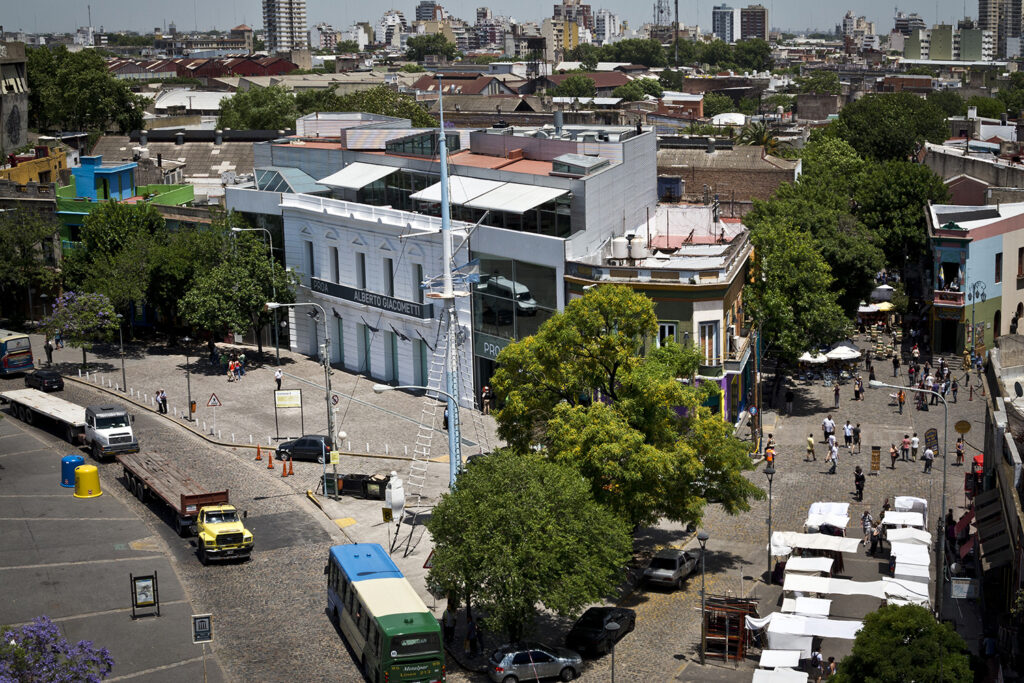
Fundacion Proa
Once you tire of the fútbol at La Bombonera and of the Maradona impersonators at Caminito you can head over to Fundación Proa at Pedro de Mendoza 1929. It’s an excellent modern and contemporary art museum that hosts international art exhibitions and has a gourmet café with river views on the third floor. It’s open from 11am to 8pm, Tuesday to Sunday.
Handcrafts market
If you visit Caminito on weekends, you will also be able to go shopping at the Feria de la Ribera arts and crafts market, which starts at the front of Caminito and goes around in front of the Riachuelo river. Here you will find handmade crochet,scarves and shawls, traditional mate gourds and bombillas (the metal straws used for drinking mate), jewellery and lots of other interesting craft pieces, all at reasonable prices.
And if you work up a hunger after traipsing around Caminito and the feria, we strongly recommend an authentic Italian Pizzeria nearby in La Boca Banchero Pizzeria (Suarez 396 ). The restaurant also happens to have been a favorite of Benito Quinquela Martin, the architect of Caminito, so it is a fitting end to the outing – and delicious too!
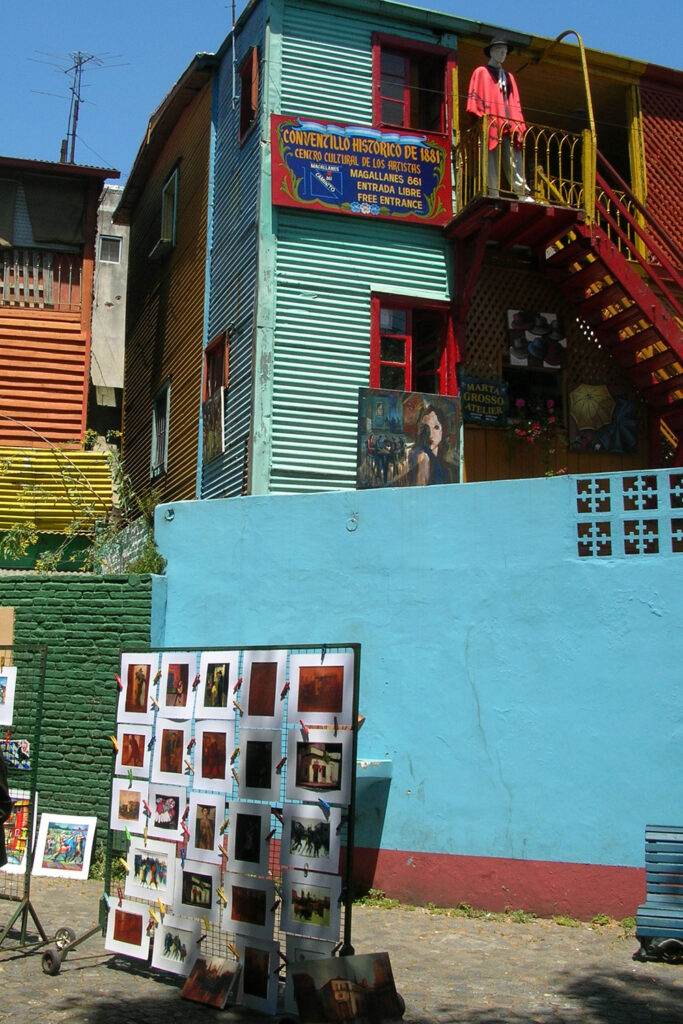



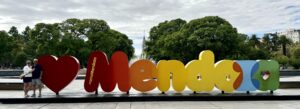



No comment yet, add your voice below!